[국제금융론] 동아시아 지역의 화교자본과 한국(영문)
 등록일 / 수정일
등록일 / 수정일 페이지 / 형식
페이지 / 형식 자료평가
자료평가 구매가격
구매가격
- 2010.12.14 / 2019.12.24
- 20페이지 /
 docx (MS워드 2007이상)
docx (MS워드 2007이상) - 평가한 분이 없습니다. (구매금액의 3%지급)
- 1,700원
최대 20페이지까지 미리보기 서비스를 제공합니다.
자료평가하면 구매금액의 3%지급!
 1
1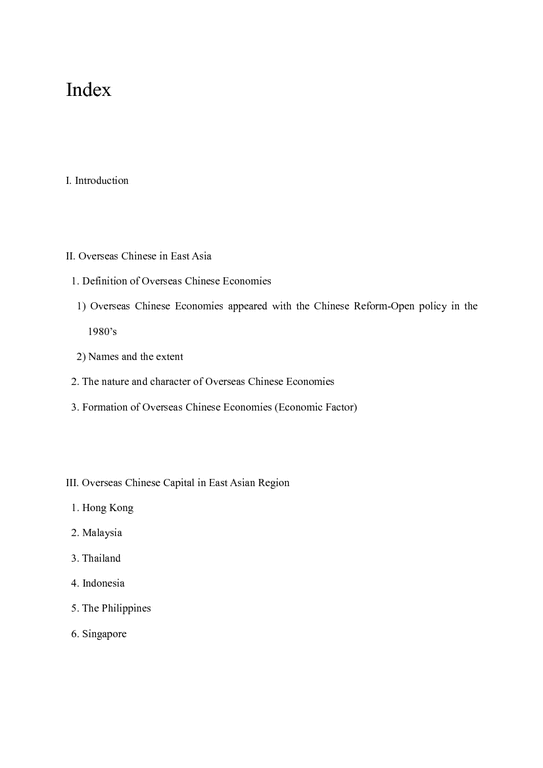 2
2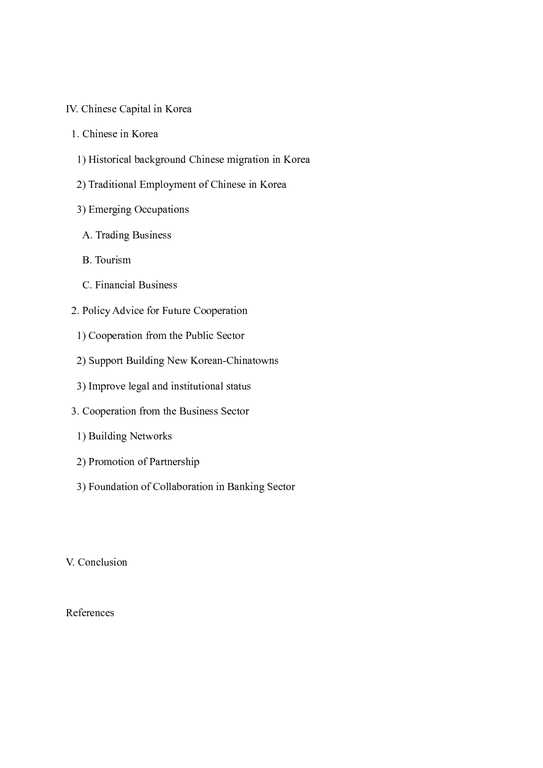 3
3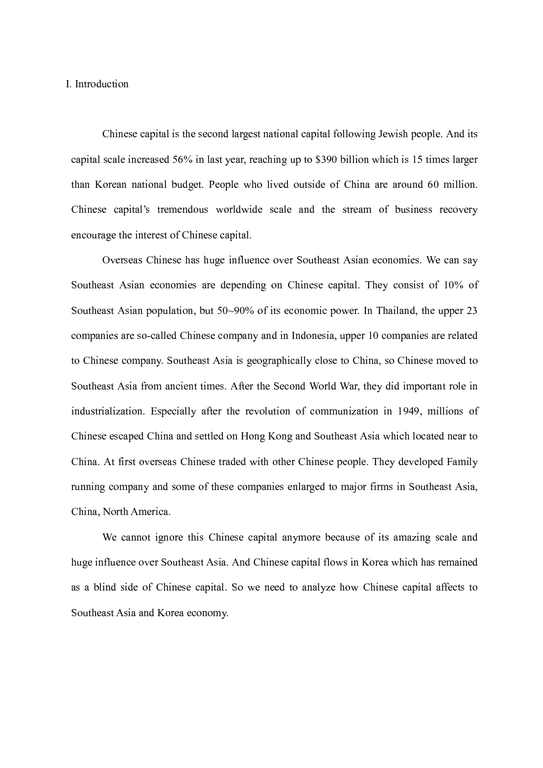 4
4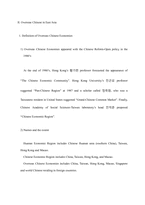 5
5 6
6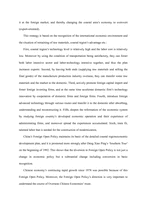 7
7 8
8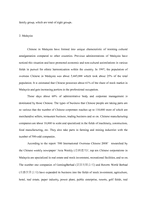 9
9 10
10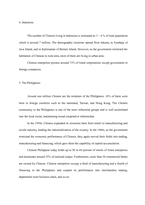 11
11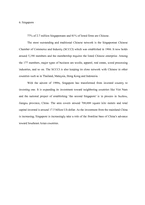 12
12 13
13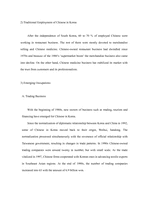 14
14 15
15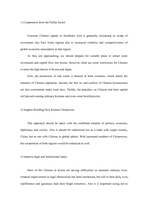 16
16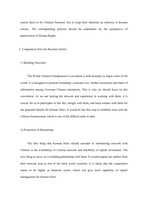 17
17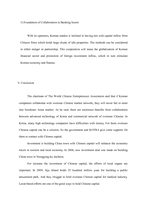 18
18 19
19 20
20
추천 연관자료
- 목차
-
Chinese Capital and East Asia
International Finance
Index
I. Introduction
II. Overseas Chinese in East Asia
1. Definition of Overseas Chinese Economies
1) Overseas Chinese Economies appeared with the Chinese Reform-Open policy in the 1980’s
2) Names and the extent
2. The nature and character of Overseas Chinese Economies
3. Formation of Overseas Chinese Economies (Economic Factor)
III. Overseas Chinese Capital in East Asian Region
1. Hong Kong
2. Malaysia
3. Thailand
4. Indonesia
5. The Philippines
6. Singapore
IV. Chinese Capital in Korea
1. Chinese in Korea
1) Historical background Chinese migration in Korea
2) Traditional Employment of Chinese in Korea
3) Emerging Occupations
A. Trading Business
B. Tourism
C. Financial Business
2. Policy Advice for Future Cooperation
1) Cooperation from the Public Sector
2) Support Building New Korean-Chinatowns
3) Improve legal and institutional status
3. Cooperation from the Business Sector
1) Building Networks
2) Promotion of Partnership
3) Foundation of Collaboration in Banking Sector
V. Conclusion
References
- 본문내용
-
III. Overseas Chinese Capital in East Asian Region
1. Hong Kong
The population of Hong Kong is about 6.3 million and 98% of it is Chinese with 90% of them are from Guangdong province. The external structure of large corporates in Hong Kong seems to be westernized but the internal look shows rather family-oriented management system. Until 1988, ten family-owned companies dominated about 54% of Hong Kong’s stock market, seven of them were Chinese and the rest were British owned companies. Recently, Hong Kong has emerged as the hub of overseas Chinese capital, enhancing the network among them. The amount of money that Chinese corporate are holding in Hong Kong is known as around 1000 million dollar in forms of real estate, stock share, bank deposits, etc.
Since its return to China in 1997, politically, Hong Kong has been the special administrative region of People’s Republic of China, but economically, it has enjoyed independent economic system from China with the system of market-based capitalist economy. That’s why business men in Hong Kong are playing the role as network chains of Chinese economic regions without any economic restriction from the government. In addition, considering the fact the Foreign Direct Investments (FDIs) are the essential pillar that sustaining economic prosperity of China, Hong Kong takes a part in promoting foreign corporate’s entrance into the Chinese market. One of the central players of this crucial Hong Kong economy is Southeast Asian Chinese rooted in Hong Kong. Major corporations are DhaninChiaravanond family group and Huang Ziming family group of Thailand, GuoLingcan group and Robert Kuok’s in Malaysia, EungTenpong’s in Singapore, Lin Xiaoliang family company and Li Wenzheng group in Indonesia, and Australia’s Li Mingchi family group, which are total of eight groups.
2. Malaysia
Chinese in Malaysia have formed into unique characteristic of resisting cultural amalgamation compared to other countries. Previous administrations of Malaysia have noticed this situation and have promoted economic and non-cultural assimilations in various fields in pursuit for ethnic harmonization within the country. In 1997, the population of overseas Chinese in Malaysia was about 5,445,000 which took about 25% of the total population. It is estimated that Chinese possesses about 61% of the share of stock market in Malaysia and gets increasing portion in the professional occupation.
These days about 60% of administrative body and corporate management is dominated by those Chinese. The types of business that Chinese people are taking parts are so various that the number of Chinese corporates reaches up to 110,000 most of which are merchandise sellers, restaurant business, trading business and so on. Chinese manufacturing companies are about 10,000 in scale and specialized in the fields of machinery, construction, food manufacturing, etc. They also take parts in farming and mining industries with the number of 500-odd companies.
According to the report ‘500 International Overseas Chinese 2008’ researched by the Chinese weekly newspaper ‘Asia Weekly (亞洲週刊)’, top ten Chinese corporations in Malaysia are specialized in real estate and stock investment, recreational facilities, and so on. The number one companies of GentingBerhad (雲頂有限公司) and Resorts World Berhad (名勝世界公司) have expanded its business into the fields of stock investment, agriculture, hotel, real estate, paper industry, power plant, public enterprise, resorts, golf fields, real estate managing and apartment lease, and placed in 60th and 64th among ‘500 International Chinese Corporations’ respectively. However, as Southeast Asian economy was hit by the economic crisis of 1997, most of the Chinese companies also got into deep recession.
3. Thailand
- 참고문헌
-
[ASEAN에 있어서의 화교경제] 이안호
[화인자본의 활용과 한국경제의 글로벌화] 강한균, 배국향(2005)
[동남아시아 화교기업의 국제화와 문화] 김종식(2004)
[화교경제권과 아세안 국가들]
[동아시아 화인경제와 우리의 화인자본 활용방안] 최수웅, 박상수(1990)
[신의주 경제특구와 화교 자본에 관한 연구] 박기철
자료평가
-
아직 평가한 내용이 없습니다.
오늘 본 자료
더보기

최근 판매 자료
- [마케팅성공사례] `(주)두산 처음처럼` 마케팅 분석
- 산업심리학_워크넷에서 성인용 직업적성검사를 시행하고 그 결과를 요약한 후, 제 3자인 기업체 인사담당자의 입장에서 본인과 직무배치 상담을 하는 가상적인 시나리오를 작성해보자
- KT&G의 마케팅 전략분석, 생산과 물류 체계 분석, 조직 인사의 특징 및 재무 상태 분석
- TQM(전사적품질관리)의 기본원리와 사례
- 활속의화장품과향수_친환경 화장품과 유기농 화장품의 현재 동향 및 발전 방향 (1)
- 삼일회계법인 인사관리 현황과 문제점 및 개선방안
- CLO의 코칭 레포트
- [호텔경영] 신라&메리어트 호텔의 조직 구성도
- [인적자원관리] 삼성전자의 인사관리와 개선방안
- 분석심리학의 창시자 융의 일대기 융 생애 융 일화 융 중요 이론 융 주요 이론 융 저서 융 영향 융 공헌 융 업적 융 소개 융 조사 융 분석 융 개요 융 고찰 융 소고 융 피피티 융 ppt
저작권 관련 사항 정보 및 게시물 내용의 진실성에 대하여 레포트샵은 보증하지 아니하며, 해당 정보 및 게시물의 저작권과 기타 법적 책임은 자료 등록자에게 있습니다. 위 정보 및 게시물 내용의 불법적 이용, 무단 전재·배포는 금지됩니다. 저작권침해, 명예훼손 등 분쟁요소 발견시 고객센터에 신고해 주시기 바랍니다.









